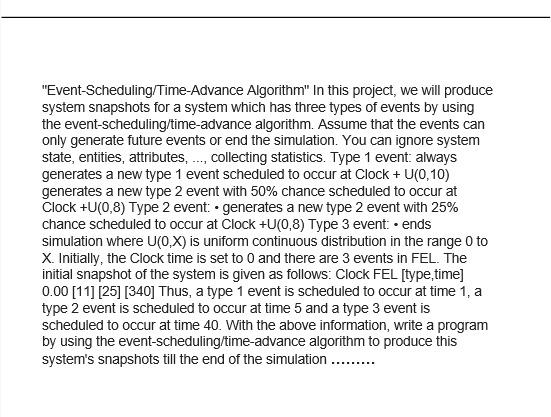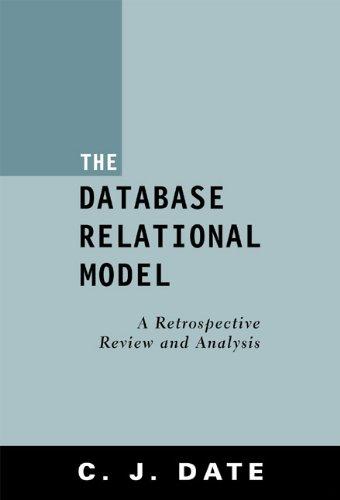PLEASE DO NOT COPY PASTE FROM CHEGG/OTHERWISE I'LL REPORT YOU

"Event-Scheduling/Time-Advance Algorithm" In this project, we will produce system snapshots for a system which has three types of events by using the event-scheduling/time-advance algorithm. Assume that the events can only generate future events or end the simulation. You can ignore system state, entities, attributes, ..., collecting statistics. Type 1 event: always generates a new type 1 event scheduled to occur at Clock + U(0,10) generates a new type 2 event with 50% chance scheduled to occur at Clock +U(0,8) Type 2 event: .generates a new type 2 event with 25% chance scheduled to occur at Clock +U(0,8) Type 3 event: ends simulation where U(0,X) is uniform continuous distribution in the range 0 to X. Initially, the clock time is set to 0 and there are 3 events in FEL. The initial snapshot of the system is given as follows: Clock FEL [type, time] 0.00 [11] [25] [340] Thus, a type 1 event is scheduled to occur at time 1, a type 2 event is scheduled to occur at time 5 and a type 3 event is scheduled to occur at time 40. With the above information, write a program by using the event-scheduling/time-advance algorithm to produce this system's snapshots till the end of the simulation ........ . "Event-Scheduling/Time-Advance Algorithm" In this project, we will produce system snapshots for a system which has three types of events by using the event-scheduling/time-advance algorithm. Assume that the events can only generate future events or end the simulation. You can ignore system state, entities, attributes, ..., collecting statistics. Type 1 event: always generates a new type 1 event scheduled to occur at Clock + U(0,10) generates a new type 2 event with 50% chance scheduled to occur at Clock +U(0,8) Type 2 event: .generates a new type 2 event with 25% chance scheduled to occur at Clock +U(0,8) Type 3 event: ends simulation where U(0,X) is uniform continuous distribution in the range 0 to X. Initially, the clock time is set to 0 and there are 3 events in FEL. The initial snapshot of the system is given as follows: Clock FEL [type, time] 0.00 [11] [25] [340] Thus, a type 1 event is scheduled to occur at time 1, a type 2 event is scheduled to occur at time 5 and a type 3 event is scheduled to occur at time 40. With the above information, write a program by using the event-scheduling/time-advance algorithm to produce this system's snapshots till the end of the simulation







